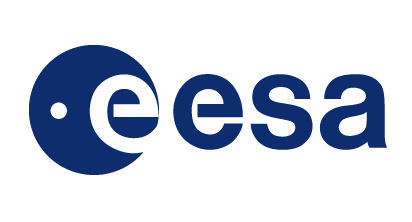FEASIBILITY STUDY ON DEMONSTRATION OF 3GPP NEW RADIO OVER SATELLITE
Introduction and Problem Statement
After a number of years of research and technical development, the initial 5G New Radio technology according to Release 15 is now deployed as mainstream technology serving the public and industry. As in LTE, there will be several evolutions of New Radio as well within the upcoming 3GPP releases. Many extensions are currently under investigation in 3GPP to enable further markets to be addressed by cellular based communication systems, like automotive, positioning and industrial production/automation.
There is a unique opportunity in 3GPP to standardize satellite as an integral part in 5G as part of the Release 17 together with the cellular stakeholders given their increasing interest in the topic. This opportunity has to be seized immediately to prevent the risk of a postponement of the standard development to future Releases beyond 17 while SatCom users and service providers are calling for standardized solutions.
Proposers are expected to come forward with an idea relying on a compelling existing prototype, testbed or solution, e.g. from other activities of 5G-METEORS. The proposal shall already outline the technical advancement and position the scope of the solution to be demonstrated, motivating the demonstration. Proposers should also motivate their choice of the event to demonstrate. The activity shall evaluate the live demonstration using existing satellite transponders with a bandwidth of at least 20 MHz to enable broadband applications. In case regenerative payloads are used, the bandwidth can be reduced.
This feasibility study shall propose, trade off options, justify and detail a future demonstration of 5G NR over satellite (using transparent payloads) or from satellites (using regenerative payloads).
The study shall assess the use of existing or near-future transparent satellites in GEO, MEO or LEO. Furthermore, the feasibility shall consider a number of highly capable Software Defined Radios (SDR) that are available (or in near future) in space (e.g. on the International space Station) on smaller satellites. A proposed demonstration shall be technically feasible 2019 or 2020.
Therefore, in case proposers are targeting a live, over the air demonstration, proposers should also consider and give a clear indication on the logistics and local arrangements, existing pre-agreements with local organizers/hosts concerning the set-up of the needed infrastructure (satellite antenna dish, etc.).
Demonstrations of backhaul are not within the scope of this demonstration, as covered already by other 5G-related activities. The activity shall focus on direct satellite access use cases as discussed in the three 3GPP RAN documents ([1]; [2] and [3]).
Preferably existing 5G air interface developments are used in such a demonstration, such as ongoing NR-over-satellite waveforms adaptations.
Objective and work to be performed
The objective of the activity is to define a compelling over-the-air demonstration of 5G NR over satellite.
The reach this objective the activity shall:
- Propose and justify use cases which clearly demonstrates the added value of a 5G satellite component (e.g. multicast overlay)
- Propose technical demonstration architectures that would answer to such use cases
- Evaluate the various options to implement such a technical demonstration, either using 5G-over-satellite, or 5G-from-satellite
- Propose a number of preferred options and detail for these options:
- The specific and compelling 5G features that this demonstration will demonstrate
- Required infrastructure (space segment, ground and segment, software or hardware components implementing the UE, gNB and 5GC ) and all required modifications
- Planning of logistics
- Companies required and possible companies’ interest
- Estimation of the costs
- Possible events to showcase this demonstration
Deliverables and Output
- Technical note on demonstration objectives, demonstrator architecture, use cases, necessary components of the setup, logistics planning and cost assessment.
Duration and schedule (mid term milestone and review, if applicable)
The duration of the activity shall not exceed 3 months.
Maximum budget available for the activity
The budget of this activity shall not exceed 20000 €.
References
[1] 3GPP TR 38.811 “Study on New Radio (NR) to support non terrestrial networks (Release 15)”, V15.0.0, 2018-06
[2] 3GPP RP-190710 “Study on solutions for NR to support non-terrestrial networks (NTN)”, Thales, 3GPP TSG RAN meeting #83, Shenzhen, China, March 18-21, 2019
[3] 3GPP TR 38.821 “Solutions for NR to support non-terrestrial networks (NTN) (Release 16)”, Draft v0.6.0, 2019-04
Proposal Submission
Submit your proposal to this topic here.

